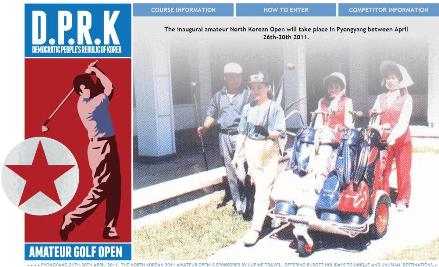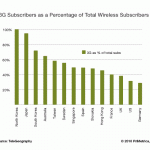UPDATE: China denies sending troops to the DPRK. According to the Global Times:
A Chinese government official Sunday dismissed a report by a South Korean newspaper that China was sending troops to North Korea.
“China will not send a single soldier to other countries without the approval of the UN,” an official at the Chinese Ministry of Defense told the Global Times on condition of anonymity, citing China’s basic policy on troop deployment.
ORIGINAL POST BELOW: According to the AFP:
China is in discussions with North Korea about stationing its troops in the isolated state for the first time since 1994, a South Korean newspaper reported Saturday.
The Chosun Ilbo newspaper quoted an anonymous official at the presidential Blue House as saying that Beijing and Pyongyang recently discussed details of stationing Chinese soldiers in the North’s northeastern city of Rason.
The official said the soldiers would protect Chinese port facilities, but the location also gives access to the Sea of Japan (East Sea), while a senior security official was quoted as saying it would allow China to intervene in case of North Korean instability.
A spokeswoman for the Blue House said she had no information, while China’s defence ministry declined comment to AFP on the matter this week.
“North Korea and China have discussed the issue of stationing a small number of Chinese troops to protect China-invested port facilities” in the Rason special economic zone, the unnamed official was quoted as saying.
“The presence of Chinese troops is apparently to guard facilities and protect Chinese nationals.”
China reportedly gained rights in 2008 to use a pier at Rason, securing access to the Sea of Japan (East Sea), as North Korea’s dependence on Beijing continues to grow amid a nuclear stand-off with the United States and its allies.
The last Chinese troops left the North in 1994, when Beijing withdrew from the Military Armistice Commission that supervises the truce that ended the 1950-53 Korean war.
Seoul’s International Security Ambassador Nam Joo-Hong told the Chosun Ilbo that China could now send a large number of troops into the North in case of instability in the impoverished communist state.
“The worst scenario China wants to avoid is a possibly chaotic situation in its northeastern provinces which might be created by massive inflows of North Korean refugees,” Nam was quoted as saying.
“Its troops stationed in Rason would facilitate China’s intervention in case of contingencies in the North,” he said.
Here is the original report in the Choson Ilbo (in Korean).
UPDATE: The Choson Ilbo posted a story in English which claims the Chinese soldiers are already in North Korea:
Chinese troops have been stationed in the special economic zone of Rajin-Sonbong in North Korea, sources said Friday.
This would be the first time since Chinese troops withdrew from the Military Armistice Commission in the truce village of Panmunjom in December 1994 that they have been stationed in the North.
“Pyongyang and Beijing have reportedly discussed the matter of stationing a small number of Chinese troops in the Rajin-Sonbong region to guard port facilities China has invested in,” a Cheong Wa Dae official said. “If it’s true, they’re apparently there to protect either facilities or Chinese residents rather than for political or military reasons.”
How many of them are there is not known. The move is unusual since North Korea is constantly calling for U.S. forces to pull out of South Korea and stressing its “juche” or self-reliance doctrine.
A China-based source familiar with North Korean affairs said, “In the middle of the night around Dec. 15 last year, about 50 Chinese armored vehicles and tanks crossed the Duman (Tumen) River from Sanhe into the North Korean city of Hoeryong in North Hamgyong Province.”
Residents were woken up by the roar of armored vehicles. Hoeryong is only about 50 km from Rajin-Sonbong. Other witnesses said they saw military jeeps running from the Chinese city of Dandong in the direction of Sinuiju in the North at around the same time.
“The Chinese armored vehicles could be used to suppress public disturbances and the jeeps to round up on defectors from the North,” the source speculated.
Nam Joo-hong, the ambassador for international security, said, “What China is most worried about in case of a sudden change in the North is mass influx of defectors, which would throw the three northeastern Chinese provinces into confusion. With its military presence in Rajin-Sonbong, there is a likelihood that China could intervene in Korean affairs by sending a large number of troops into the North under the pretext of protecting its residents there in an emergency.”
The North and China have engaged in lively military exchanges since two visits to China by North Korean leader Kim Jong-il last year. Guo Boxiong, the top Chinese military officer and vice chairman of the Chinese Central Military Commission, visited the North in late October last year and met with leader Kim Jong-il and his son and heir Jong-un. In the meeting, Kim senior emphasized “blood ties” between the two countries.
A Chinese mission has been stationed in Rajin-Sonbong since last December. China is transporting natural resources from its northeastern region to the south via Rajin-Sonbong Port, which has recently been renovated.
According to China’s official Xinhua news agency on Jan. 3, China first used the port on Dec. 7, when it transported 20,000 tons of coal from a mine in Hunchun, Jilin Province to southern parts including Shanghai. There is speculation that China will supply its own electricity to Rajin-Sonbong from April.
Quoting an internal North Korean source, the online newspaper Daily NK said the North and China in December signed an investment pact on building three more piers at the port and building a highway and laying a railroad between Quanhe in Jilin and Rajin-Sonbong.
The number of Chinese people arriving in the special zone has grown as a result of the North’s quest for investment, observers said.
“The North Korean State Security has more or less stopped checking Chinese people,” another source said. “The North has apparently concluded that it is unavoidable to accept the Chinese military presence on its land to woo Chinese investment, even if it’s not happy about it.”
Read the full story here:
China to station troops in N. Korea: report
AFP
1/16/2011


